Tropics Overview: Very Quiet Year To Date
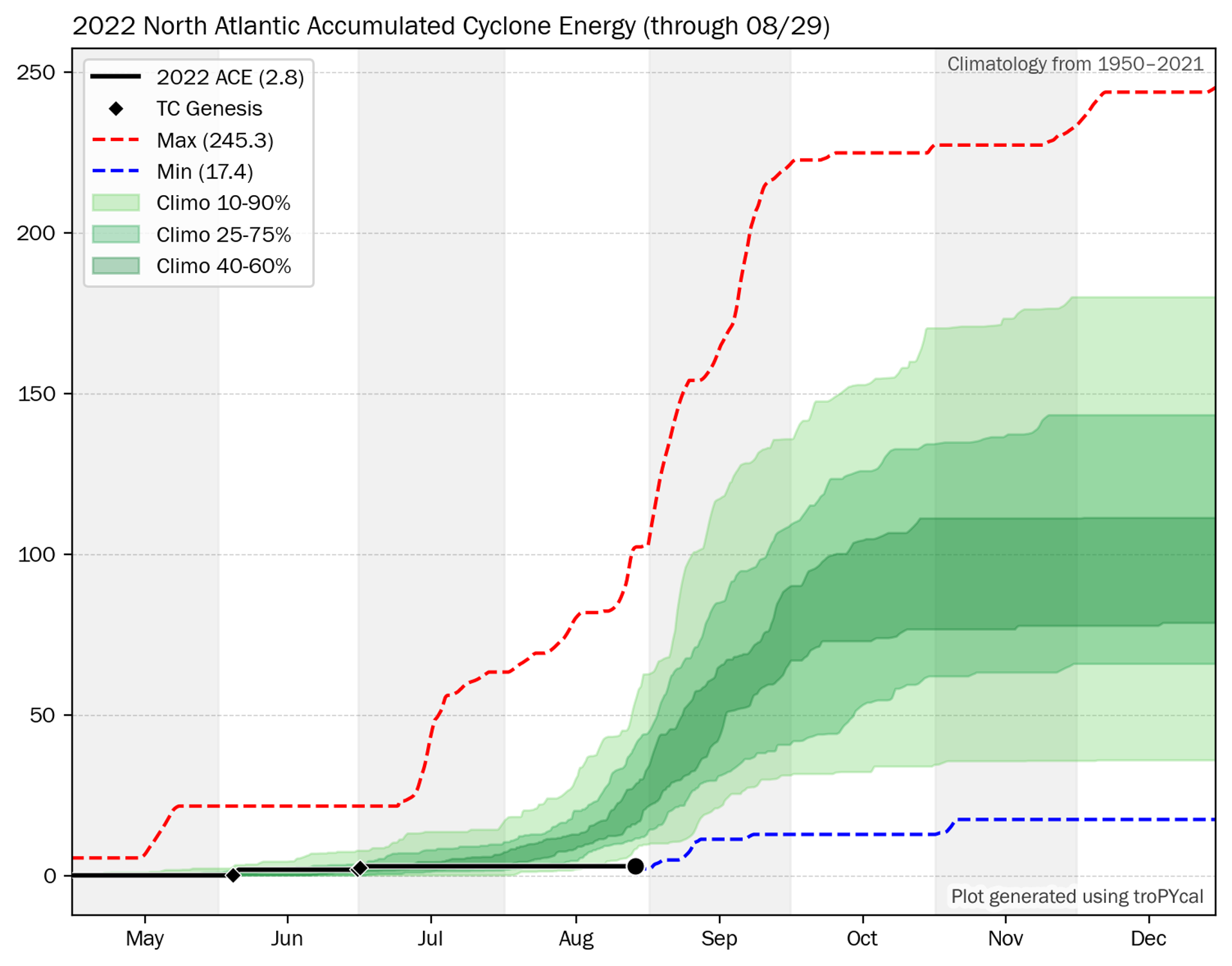 ACE to date for this year in black, compared with the climatology in green.
ACE to date for this year in black, compared with the climatology in green.We've had quiet stretches of tropical activity in late August before, but this year has been particularly notable in this absence of activity. In an analysis I did, I took all ACE accumulated from September 1 onward every year from 1950 to 2021 and projected it onto this year's ACE to date, to get a sense of the climatological evolution for the rest of the year. Comparing these results to the median annual ACE, the climatological probability of an above-median ACE year has decreased to merely 29.1%.
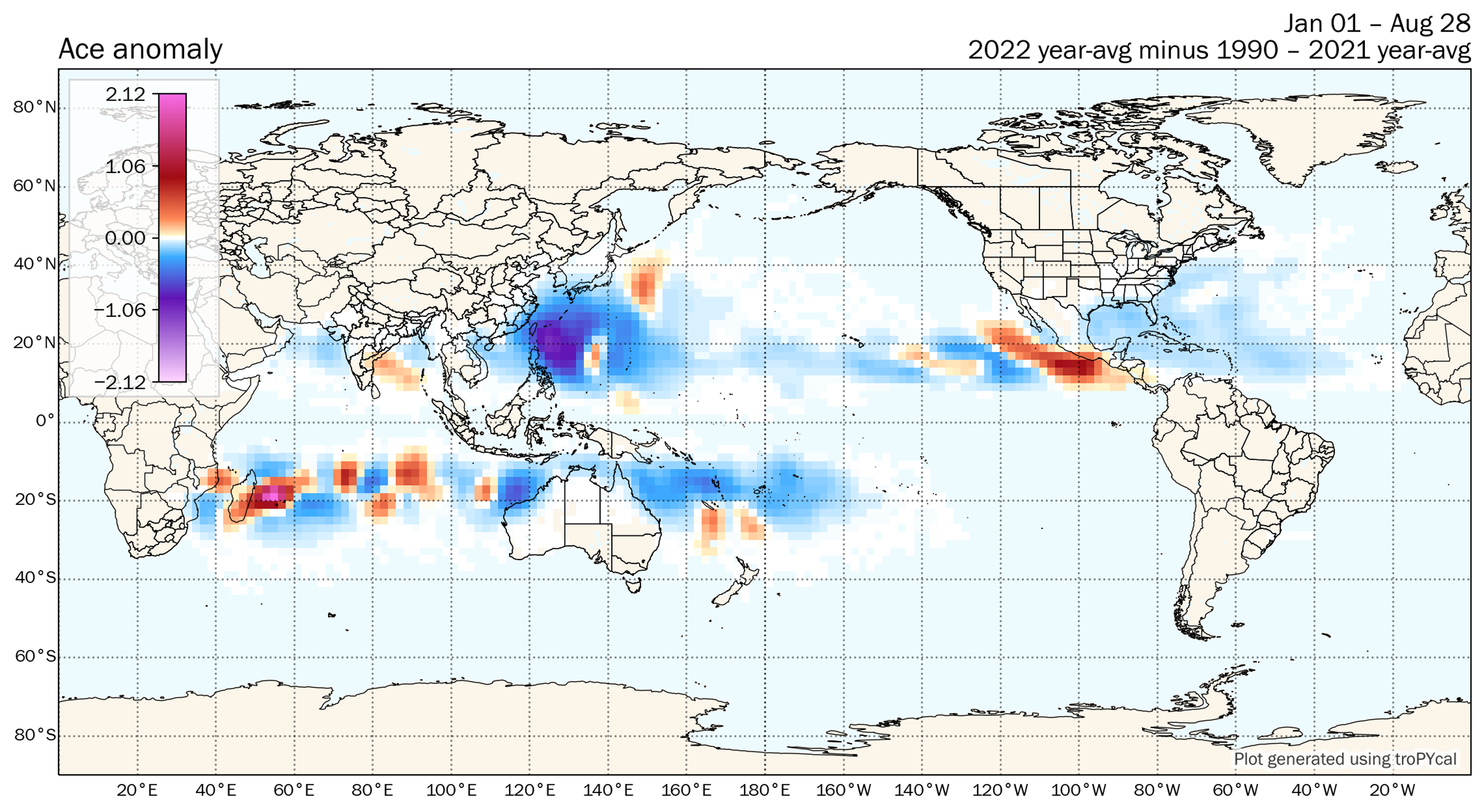 Global ACE anomaly using a 2 degree grid.
Global ACE anomaly using a 2 degree grid.Some speculation has also suggested the Hunga Tonga volcanic eruption back in January might have impacted the global climate and potentially indirectly tropical cyclone activity – in the months following the eruption, we've seen extremely high water vapor concentrations in the stratosphere, which cooled the stratosphere resulting in record cold temperatures. Given how recent this was, however, this area will likely require more research to conclusively establish any potential link between the volcanic eruption and global TC activity, and any potential lingering impacts into this winter in the North Hemisphere.
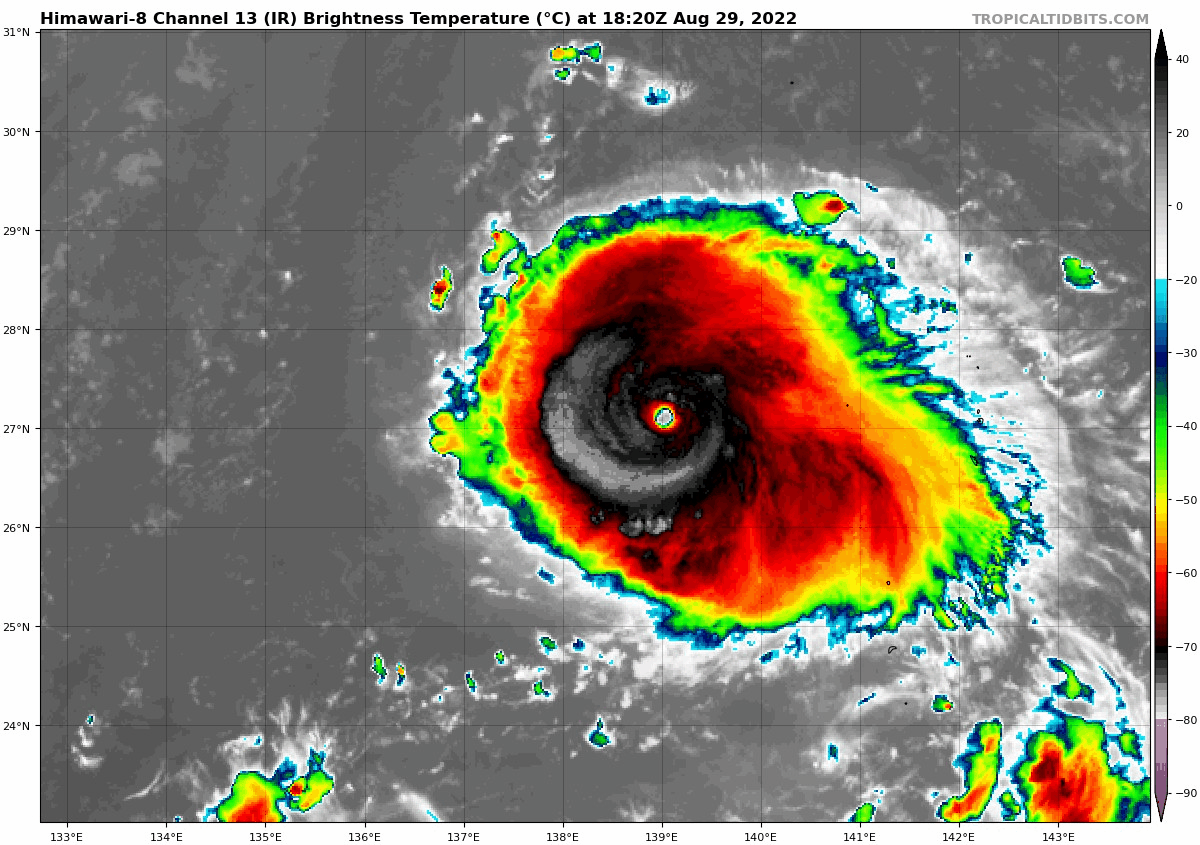 Infrared satellite loop of Typhoon Hinnamnor intensifying, courtesy of Tropical Tidbits.
Infrared satellite loop of Typhoon Hinnamnor intensifying, courtesy of Tropical Tidbits.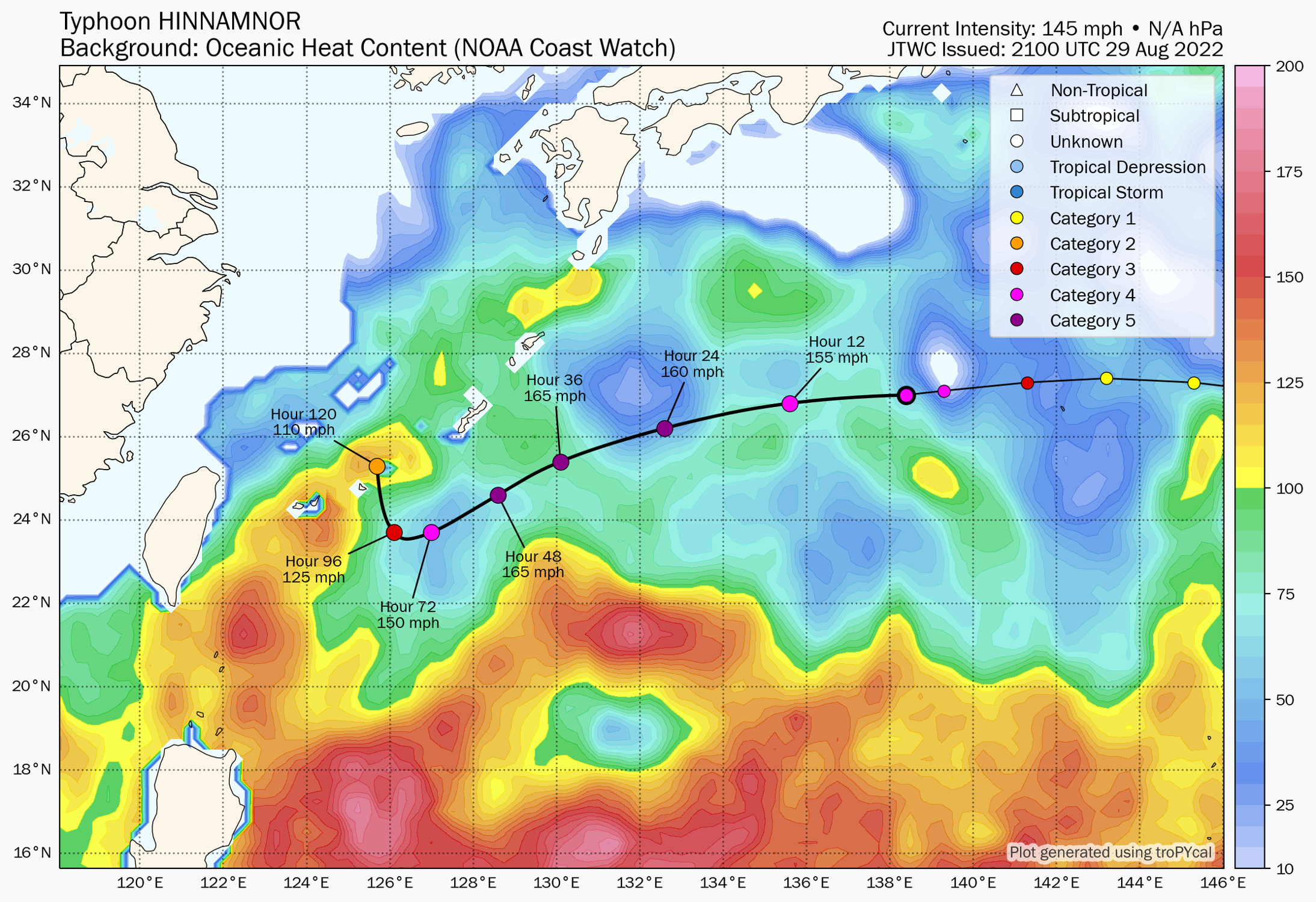 JTWC forecast track for Hinnamnor, with OHC from NOAA Coast Watch in the background.
JTWC forecast track for Hinnamnor, with OHC from NOAA Coast Watch in the background.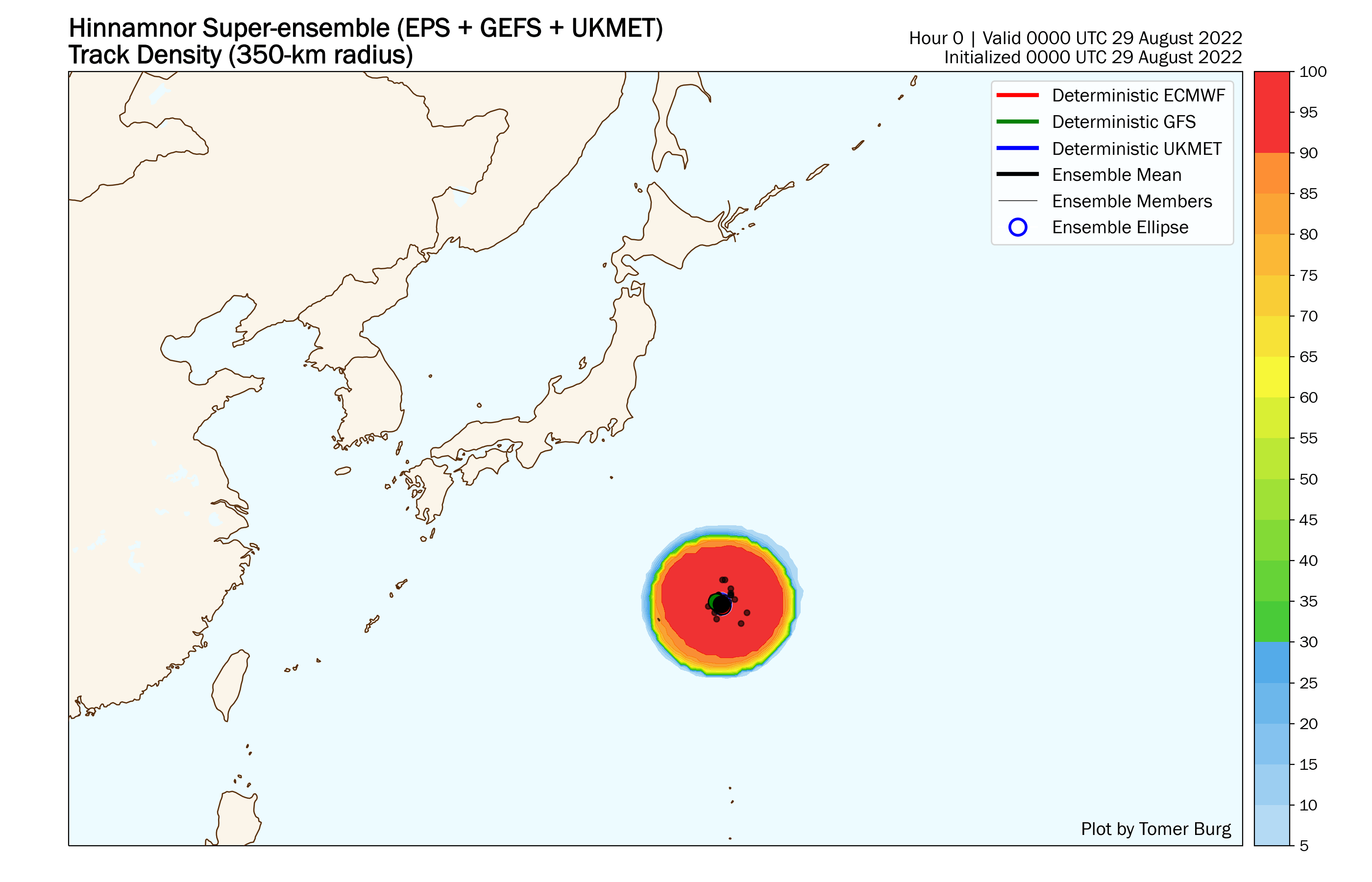 Forecast ensemble tracks from the GEFS, EPS and UKMET ensembles.
Forecast ensemble tracks from the GEFS, EPS and UKMET ensembles.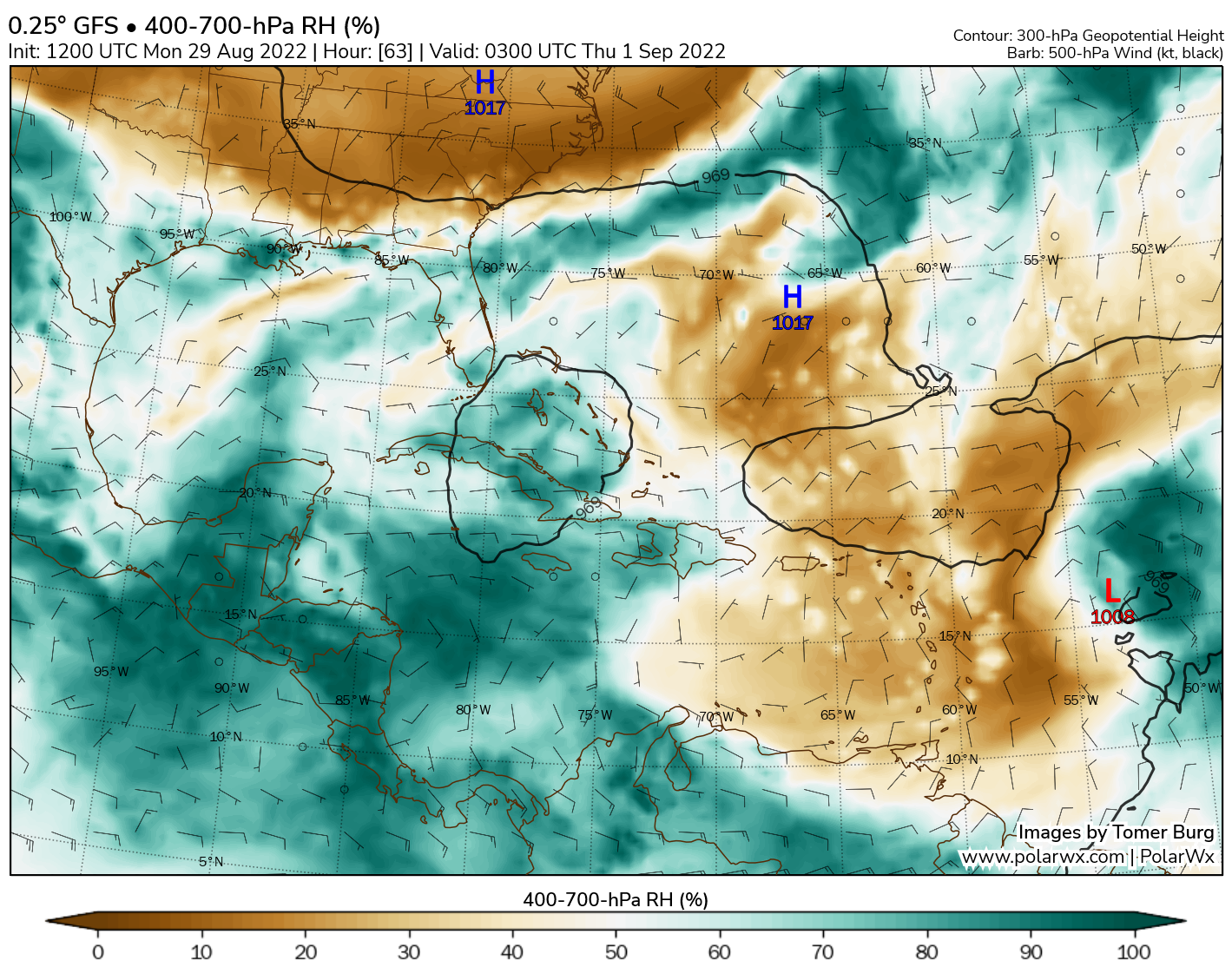 GFS forecast 400-700 hPa averaged relative humidity (%), with 300-hPa height in solid black contours.
GFS forecast 400-700 hPa averaged relative humidity (%), with 300-hPa height in solid black contours.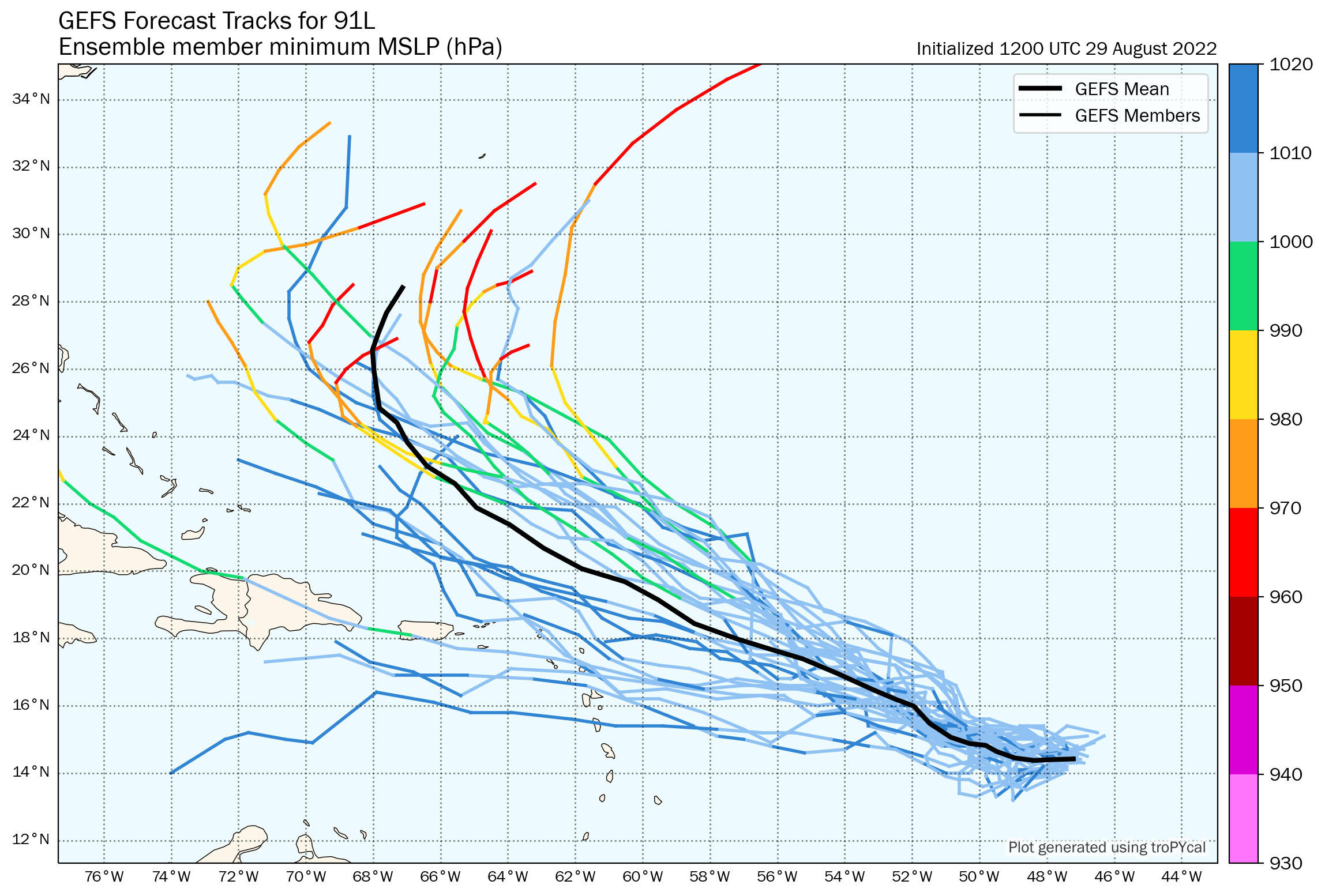 GEFS ensemble forecast tracks for 91L, colored by minimum pressure.
GEFS ensemble forecast tracks for 91L, colored by minimum pressure.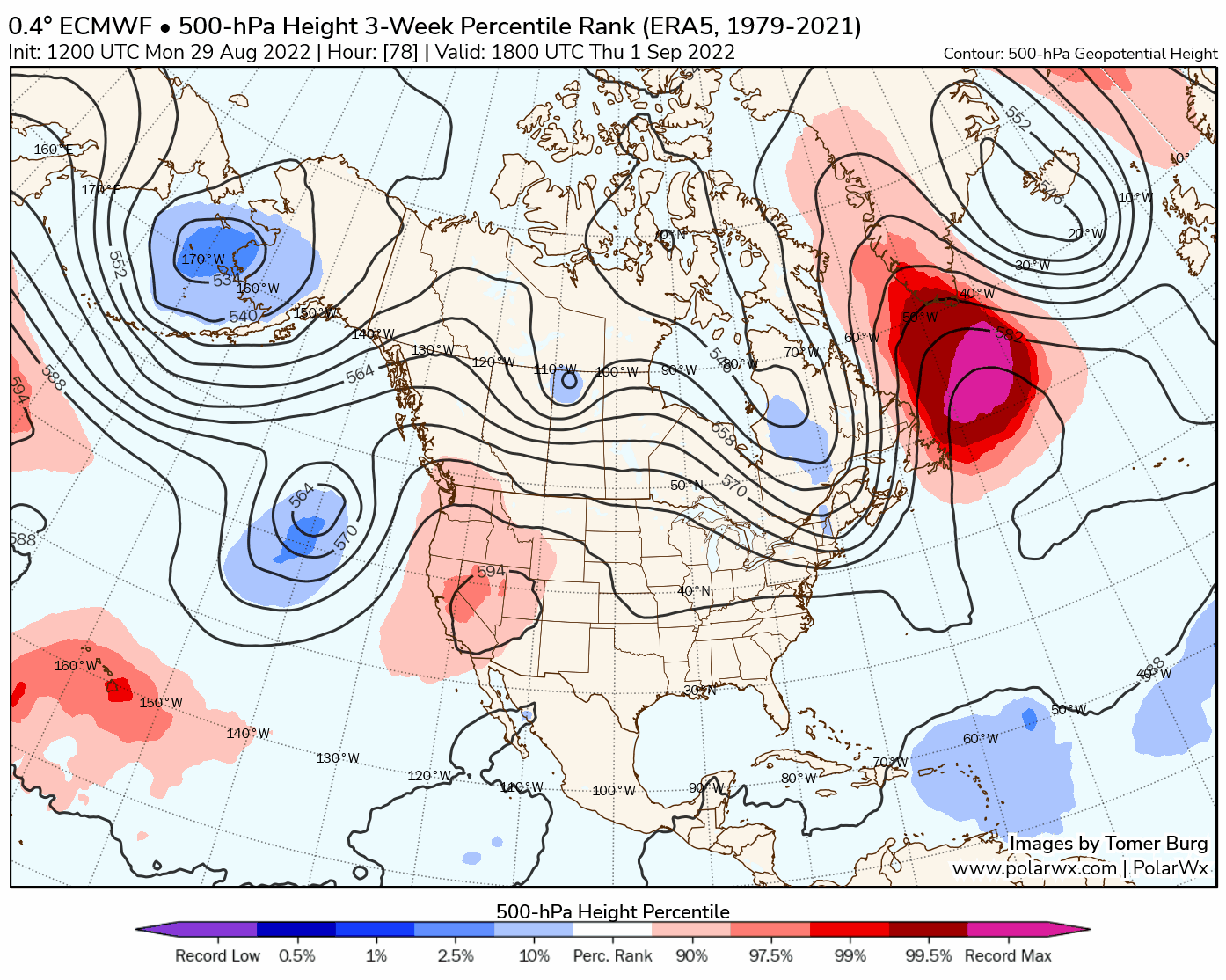 ECMWF forecast 500-hPa geopotential height (dam), and climatological percentile ranks.
ECMWF forecast 500-hPa geopotential height (dam), and climatological percentile ranks.